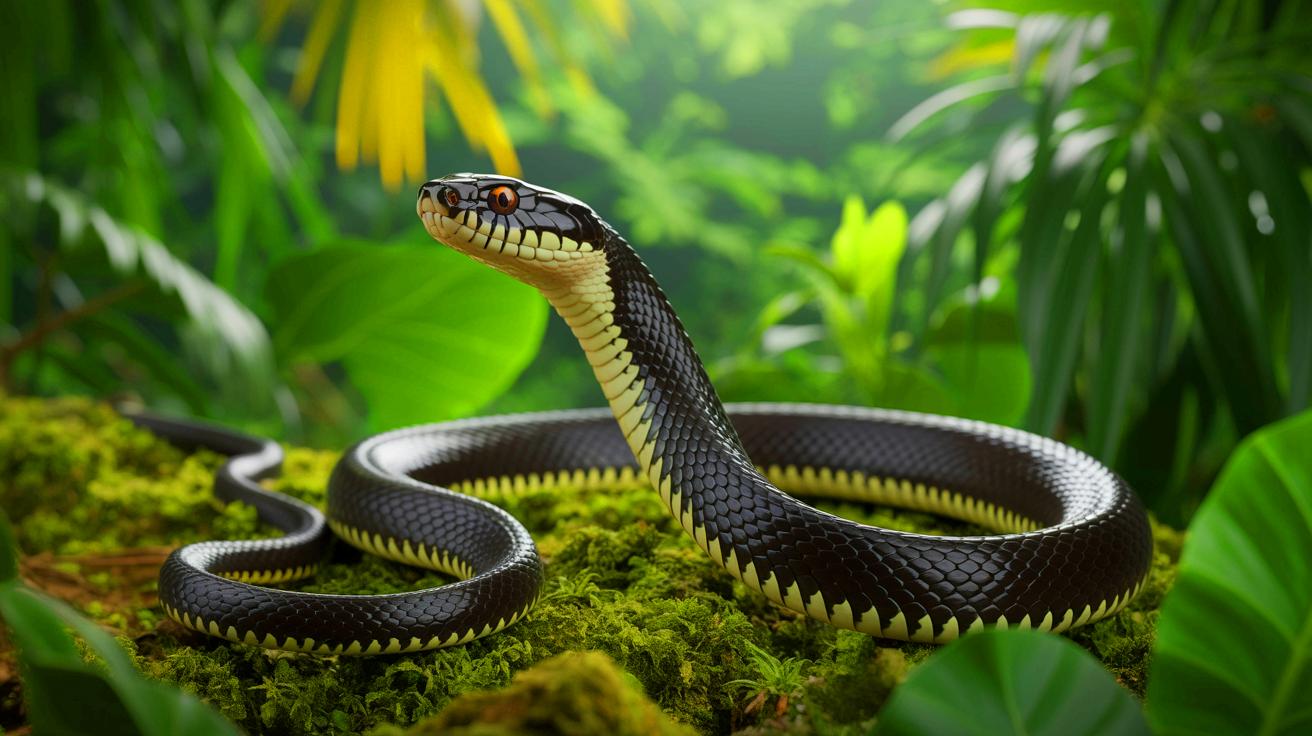- 🐍 Researchers discovered a new species of snake, the Dendrelaphis atra, on Misima Island, known for its striking black eyes and color-changing abilities.
- 🌿 Misima Island, part of the Milne Bay Province, is a recognized biodiversity hotspot, hosting numerous endemic species of reptiles and amphibians.
- 🏗️ The discovery in human-modified settings highlights the snake’s adaptability and sparks interest in understanding its ecological role.
- 🔍 The findings emphasize the necessity for conservation efforts in Papua New Guinea to protect its unique habitats and species.
In the dense, vibrant ecosystems of Papua New Guinea lies a world teeming with undiscovered wonders. One such revelation has emerged from the remote Misima Island, where a startling new species of snake has been identified. This discovery highlights the island’s incredible biodiversity and raises questions about the ecological complexities of these lesser-known regions. Join us as we delve into the fascinating details of this groundbreaking find and explore the profound implications it holds for our understanding of biodiversity.
A Creature Unlike Any Other
The atra tree snake, scientifically named Dendrelaphis atra, distinguishes itself from other members of the Dendrelaphis genus through its unique physical characteristics and behaviors. With its sleek black skin and prominent black eyes, the atra tree snake is a sight to behold. According to Fred Kraus, the researcher who discovered this snake, the species undergoes a remarkable color transformation as it matures. Young snakes begin with a gray-brown hue, gradually shifting to a uniform black as they age. This color shift is not just a visual spectacle but a defining trait that sets the atra apart from its relatives.
These intriguing snakes have been found in diverse habitats across Misima Island, from village gardens to rainforest ridges and even in human-altered environments like mining sites. Despite their relatively widespread presence, much remains to be learned about their behavior and ecological role. Kraus’s discovery has sparked a wave of interest in the ecological impact of the Dendrelaphis atra and the rich biodiversity of Misima Island.
A Glimpse into a Biodiversity Hotspot
Misima Island is part of the Milne Bay Province, a region celebrated for its remarkable biodiversity. As part of Papua New Guinea, which hosts over 5% of the world’s total species, Milne Bay is a biodiversity hotspot, particularly for reptiles and amphibians. The discovery of the Dendrelaphis atra adds another layer to the region’s ecological tapestry.
Kraus’s research extended beyond the atra tree snake, identifying three additional snake species endemic to different islands within the Louisiade Archipelago. This underscores the incredible variety of life forms in the area and emphasizes the critical importance of conservation. Each new discovery in this region strengthens its role in global biodiversity efforts, highlighting the urgent need for ongoing research and protection of these unique habitats.
The Role of Human Activity
Human activity on Misima Island has significantly altered the landscape, with mining operations and other developments impacting local ecosystems. However, the discovery of the atra tree snake in these human-modified areas suggests a degree of adaptability in the species. This adaptability raises questions about the resilience of local wildlife in the face of environmental changes.
While some species may thrive in altered environments, others could face challenges, leading to shifts in the island’s ecological balance. Understanding how human activities intersect with wildlife populations is crucial for developing effective conservation strategies. By studying species like the atra tree snake, researchers can better assess the impacts of human encroachment and devise strategies to mitigate adverse effects, preserving the island’s rich biodiversity for future generations.
Implications for Conservation Efforts
The discovery of the Dendrelaphis atra underscores the importance of targeted conservation efforts in biodiversity hotspots like Misima Island. Protecting such regions requires a comprehensive approach that balances ecological preservation with sustainable development. As researchers continue to uncover new species, they provide valuable data that can inform conservation policies and strategies.
Efforts to safeguard Misima Island’s biodiversity must address both the immediate threats posed by human activities and the long-term challenges of climate change. By promoting sustainable practices and fostering local community involvement, conservationists can help ensure the survival of unique species like the atra tree snake. The continued exploration and study of these regions are vital for advancing our understanding of biodiversity and reinforcing the global commitment to environmental stewardship.
As we uncover the mysteries of places like Misima Island, we are reminded of the vast, untapped potential that lies within the natural world. The discovery of the atra tree snake is not just a scientific milestone but a call to action for preserving the rich tapestry of life on our planet. What other secrets might these unexplored regions hold, waiting to be discovered by the next generation of researchers?
Our author used artificial intelligence to enhance this article.
Did you like it? 4.3/5 (20)
